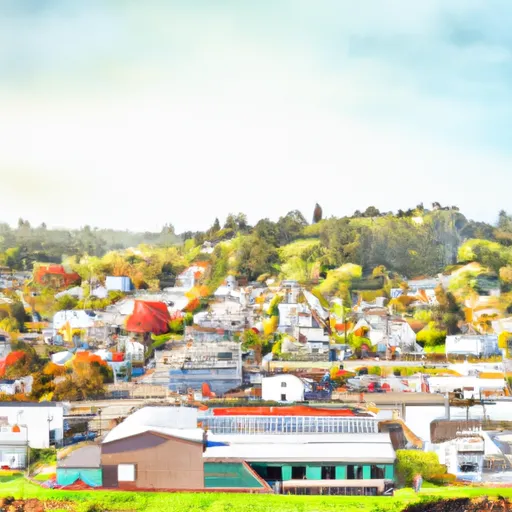-
 Snoflo Premium
Snoflo Premium
Get unlimited access to all our content
With no Ad interruptions! - Start Your Free Trial Login with existing account
Skamokawa
Eden Index
Climate
5.5
•
Recreation
3.4
•
Community
•
Safeguard
3.4/10

Skamokawa is a small unincorporated community located in Wahkiakum County, Washington. It is situated on the banks of the Columbia River and surrounded by stunning natural beauty. The climate in Skamokawa is considered temperate and mild, with warm, dry summers and cool, wet winters. The area experiences a high annual rainfall and occasionally strong winds due to its proximity to the river.
Hydrology constituents play a significant role in Skamokawa, with the Columbia River serving as a vital waterway for transportation and trade. The river also offers excellent opportunities for water-based activities such as boating, fishing, and kayaking. Additionally, the Skamokawa Creek and associated wetlands contribute to the area's hydrology system, providing habitat for various wildlife.
Outdoor recreation enthusiasts will find plenty of opportunities in Skamokawa. The area offers scenic hiking trails, including the historic Julia Butler Hansen National Wildlife Refuge Trail, where visitors can explore diverse ecosystems and observe native wildlife. The nearby Skamokawa Vista Park provides camping facilities, picnic areas, and access to the river, making it a popular spot for outdoor gatherings and water recreation.
Overall, Skamokawa, Washington, offers a serene natural environment, abundant outdoor recreation opportunities, and a unique connection to the hydrology constituents of the Columbia River and surrounding waterways.
What is the Eden Index?
The Snoflo Eden Index serves as a comprehensive rating system for regions, evaluating their desirability through a holistic assessment of climate health, outdoor recreation opportunities, and natural disaster risk, acknowledging the profound impact of these factors on livability and well-being.
Climate Health Indicator (CHI): 5.5
Skamokawa receives approximately
2428mm of rain per year,
with humidity levels near 86%
and air temperatures averaging around
10°C.
Skamokawa has a plant hardyness factor of
8, meaning
plants and agriculture in this region tend to thrive here all year round.
By considering the ideal temperature range, reliable water supplies, clean air, and stable seasonal rain or snowpacks, the Climate Health Indicator (CHI) underscores the significance of a healthy climate as the foundation for quality living.
A healthy climate is paramount for ensuring a high quality of life and livability in a region, fostering both physical well-being and environmental harmony. This can be characterized by ideal temperatures, reliable access to water supplies, clean air, and consistent seasonal rain or snowpacks.
Weather Forecast
Streamflow Conditions
Lower Columbia
Area Rivers
Lower Columbia
Snowpack Depths
Lower Columbia
Reservoir Storage Capacity
Lower Columbia
Groundwater Levels
Recreational Opportunity Index (ROI): 3.4
The Recreational Opportunity Index (ROI) recognizes the value of outdoor recreational options, such as parks, hiking trails, camping sites, and fishing spots, while acknowledging that climate plays a pivotal role in ensuring the comfort and consistency of these experiences.
Access to outdoor recreational opportunities, encompassing activities such as parks, hiking, camping, and fishing, is crucial for overall well-being, and the climate plays a pivotal role in enabling and enhancing these experiences, ensuring that individuals can engage in nature-based activities comfortably and consistently.
Camping Areas
| Campground | Campsites | Reservations | Toilets | Showers | Elevation |
|---|---|---|---|---|---|
| Elochoman Slough Marina | None | 13 ft | |||
| Skamokawa Vista City Park | None | 30 ft |
Nearby Ski Areas
Catastrophe Safeguard Index (CSI):
The Catastrophe Safeguard Index (CSI) recognizes that natural disaster risk, encompassing floods, fires, hurricanes, and tornadoes, can drastically affect safety and the overall appeal of an area.
The level of natural disaster risk in a region significantly affects safety and the overall livability, with climate change amplifying these risks by potentially increasing the frequency and intensity of events like floods, fires, hurricanes, and tornadoes, thereby posing substantial challenges to community resilience and well-being.
Community Resilience Indicator (CRI):
The Community Resilience Indicator (CRI) recognizes that education, healthcare, and socioeconomics are crucial to the well-being of a region. The CRI acknowledges the profound impact of these elements on residents' overall quality of life. By evaluating educational resources, healthcare accessibility, and economic inclusivity, the index captures the essential aspects that contribute to a thriving community, fostering resident satisfaction, equity, and social cohesion.

